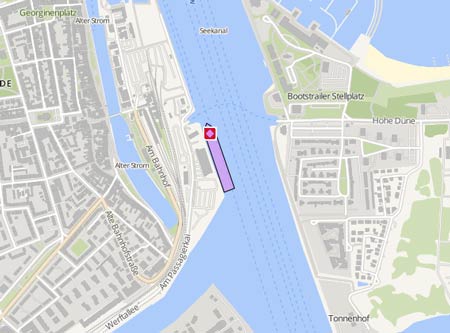NAB BULKER
Course/Position
Latest ports
Latest Waypoints
Latest news
TAIC published report into rudder loss and near grounding
Investigators of the New Zealand’s Transport Accident Investigation Commission (TAIC) have released their final report on an incident with the 'Achilles Bulker', now sailing as 'Nab Bulker' and found out that poor welding during maintenance led to a series of failures that saw the vessel lose its rudder and nearly run aground. The bulk carrier had sailed from Tauiranga on July 24, 2023, fully loaded with logs bound for China. Shortly after clearing Tauranga Harbor, the bridge team reported the vessel was steering erratically and veering off course. As they attempted to steer it back on course, the ship shuddered, and there was a loud bang. The pilot took control of navigation, trying to get the vessel on course when a second, louder bang was heard. Unable to get the vessel back into the channel, the pilot struggled to slow the ship and ordered the crew to immediately drop both anchors. 30 minutes later, the vessel was stopped outside the channel. It had narrowly avoided grounding, with the reports indicating there was less than one meter of clearance under the keel. Divers inspecting the vessel found that its rudder was gone. They were able to recover the rudder two days later from the sea floor. Inspectors found out that the rudder pintle was missing, and they concluded that it left the bottom of the rudder unsupported and allowed excess movement in the rudder system. The rudder broke off hen the rudder palm fractured on both sides of the stock. Reviewing the vessel’s records, it turned out that in 2021, during a routine dry docking, the rudder pintle assembly had been removed and later reinstalled. The rudder pintle assembly did not ensure that the pintle would remained in place during normal shipboard operations, which meant that components used to secure the pintle in place failed, allowing the pintle to drop from the bottom of the rudder. The TAIC concluded that the securing parts installed had weak, porous welds. After the ship was back in service, the welds failed due to vibrations. The nut that retained the pintle as part of the assembly unwound itself, and the pintle dropped unnoticed from the casting and sank. The rudder began experiencing unintended movement, adding to the stresses. Moving side-to-side and fore and aft, the forces were beyond the designed strength of the coupling plate (palm) at the top that joined the rudder to the solid shaft (stock) that connected to the internal steering mechanism. Fatigue cracks grew until the rudder finally fell off. The vessel was repaired and returned to service. The TAIC has issuied a warning and called for robust quality assurance procedures at the shipyard for the installation of a rudder pintle. It also notified the Maritime Safety Administration of China and said it will work with the International Maritime Organization to promote enhanced global standards for quality assurance of rudder systems during installation, maintenance, and repairs.
Upload News

